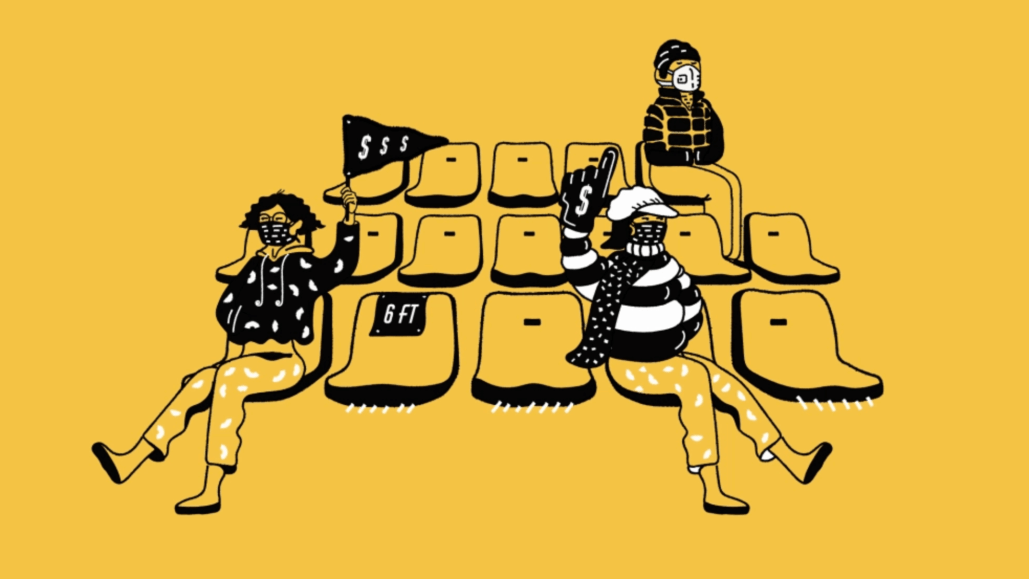
As the NHL Stanley Cup Finals are right around the corner, kicking off on June 3rd, the league is diversifying its media mix and encouraging viewers to use its second screen experience to capture the attention of as many hockey fans as possible.
The NHL is offering live and on demand content on YouTube and across social media platforms such as TikTok, Instagram and Twitter.
Leading up to the NHL Finals, the league is leveraging new features across its platforms like Instagram event reminders and TikTok’s Super Likes display countdown clocks. These will be published organically to the NHL’s social channels to let fans know where and when to tune in the games.
“We care and feed and nurture each and every one of those platforms throughout the entire season up to and including the playoffs,” said NHL’s CMO Heidi Browning. ”From a paid media standpoint, we like to look at the platforms as an opportunity to drive hardcore and new hockey fans to tune in.”
Leveraging social media and QR codes
In addition to publishing content from the feed of the game, the NHL will also capture content of fans during the game, its media day event and press conferences. As Browning stated, rather than publishing the same content across all of its social media channels, each post will be different from the others. The company wants to reach as many different audiences as possible while also boosting visibility through paid advertising.
Browning declined to share overall budget specifics. Sensor Tower data indicates that NHL has increased its spending by 140% from last year, but did not provide specifics. More than half of its digital advertising budget was spent on Meta platforms Facebook and Instagram.
The NHL has been testing a bingo game within its Fan Access app for a year in which the bingo cards automatically generate stats related to players and teams. Using the app, players will receive notifications as the game unfolds, and the card will automatically flip over as they watch.
Browning said that 28% of its players who used the bingo card at in-person events were Gen Z, 32% were millennial, 25% Gen X and 15% Boomer. Taking these results to its youth advisory board, the league decided to start the process of creating a second screen experience during the Stanley Cup Finals. Just like PepsiCo, NHL is using QR codes for driving consumers to physical stores or online platforms through first-party data.
To encourage people to use bingo as a companion to the broadcast, the QR codes will be shown on the broadcast of the games of the Finals to lead them to the app. In the Stanley Cup Finals, the NHL bingo cards will award prizes like branded merchandise and $500 gift cards as a measure for the league to gamify the experience, just as other brands did during the NHL Playoffs. The NHL wanted to leverage QR codes to increase fan engagement while also allowing them to be socially active on the second screen, according to Browning.
“The NHL’s strategy is clearly aligned with current trends in content consumption and fan engagement and we’ve seen firsthand the power of all-access content when it comes to boosting fan engagement and building anticipation,” said Daniel Kirschner, CEO and president of the cloud-based short-form media orchestration hub Greenfly. “This type of content also helps the league appeal to fans who may not be solely interested in the post-game highlights but rather the players”
Making the most of YouTube Shorts
Aside from the bingo effort, the NHL is also investing in YouTube Shorts. For NHL’s YouTube account, which has 1.9 million subscribers, the league is leaning on Shorts to attract Gen Z hockey fans. The NHL hopes that by producing Shorts, it can build up its audience and attract more eyeballs to its YouTube channel to watch some of the more produced pieces surrounding NHL playoffs and Stanley Cup Finals.
NHL’s vice president of digital content production Paul Vinciguerra, who oversees the NHL’s YouTube channel, said that they strive to put out good content and are always adapting the content strategy based on fan feedback.
“We want people to come back to our side, we want to grow the channel support, and we want to put content out there that’s appealing to everybody,” he said, adding that they have instant feedback from what people are seeing, what they’re saying and how they’re reacting, whether it be through thumbs up sharing engagement so they know what’s working and what’s not working.
NHL’s chief content officer, Steve Mayer said during the NHL Playoffs, if there is a YouTube Short that involves highlights and they notice there’s a bump in interest when they have highlights of the game, they are alerted and recognize that they need to build more long form content around that post. It’s a strategy that’s already garnered more views for the channel. For example, a Short of the overtime score that was made on May 30th by Matthew Tkachuk of the Florida Panthers has over 59,000 views and 2000 likes. A full video of the scoring moment was then published by Mayer and Vinciguerra within an hour of the Short, which currently has 77,000 views.
“All we’re trying to do constantly is improve the level of what we’re putting out there and trying to make sure that the people that watch us come back for more,” said Mayer.
More in Marketing

Zero-click search is changing how small brands show up online — and spend
To appease the AI powers that be, brands are prioritizing things like blogs, brand content and landing pages.

More creators, less money: Creator economy expansion leaves mid-tier creators behind
As brands get pickier and budgets tighten, mid-tier creators are finding fewer deals in the booming influencer economy.

‘Still not a top tier ad platform’: Advertisers on Linda Yaccarino’s departure as CEO of X
Linda Yaccarino — the CEO who was never really in charge.








